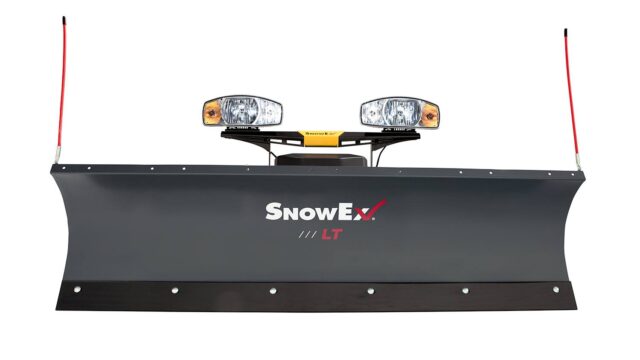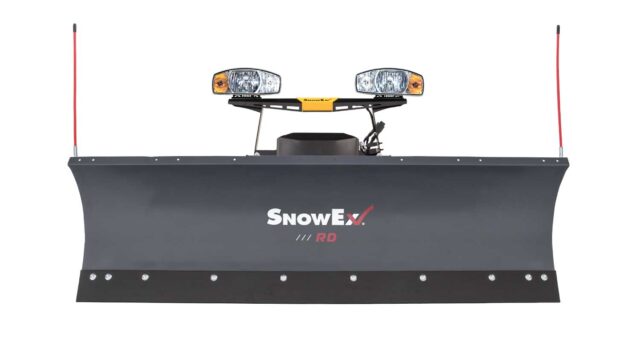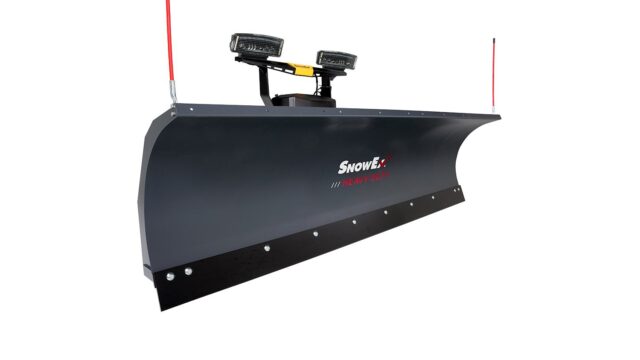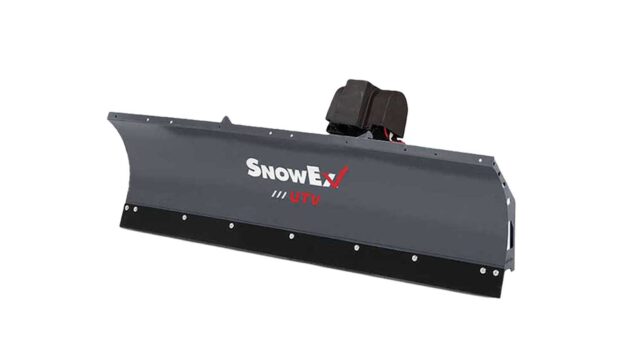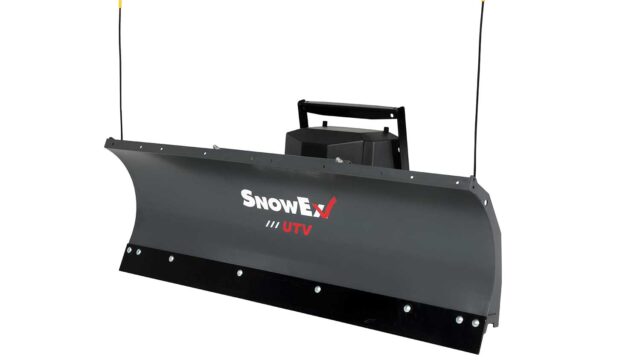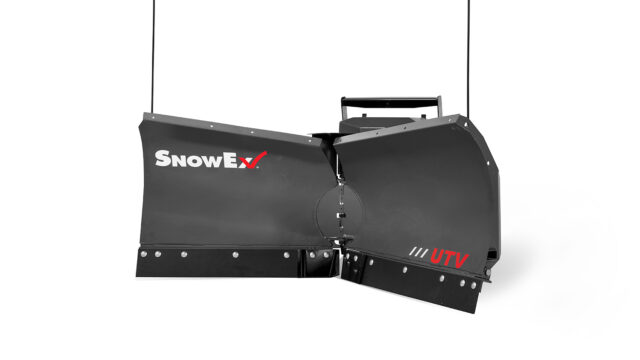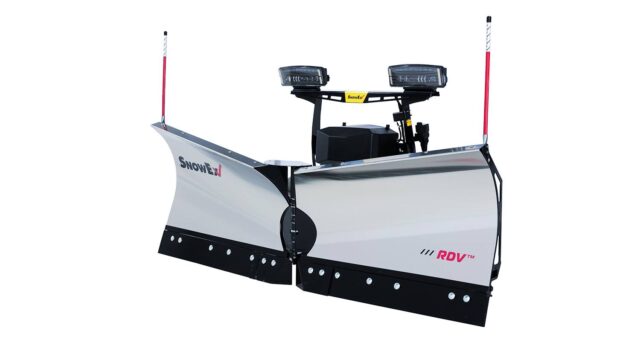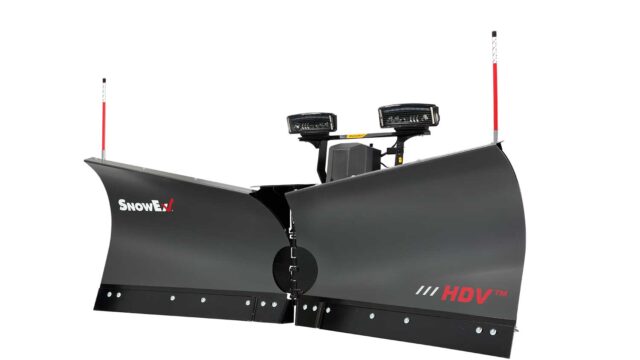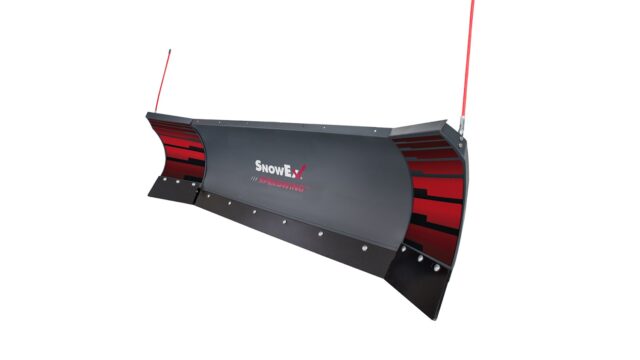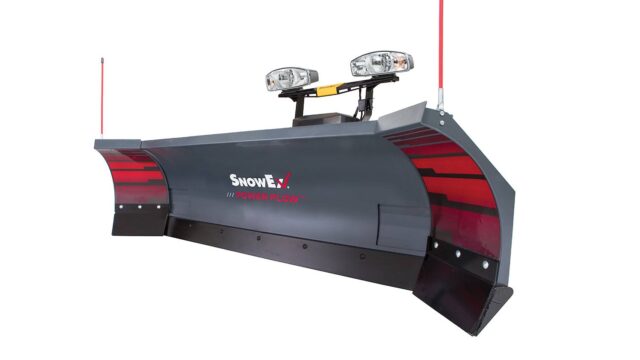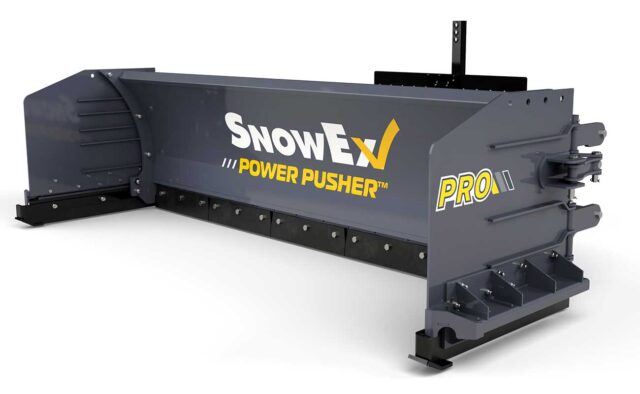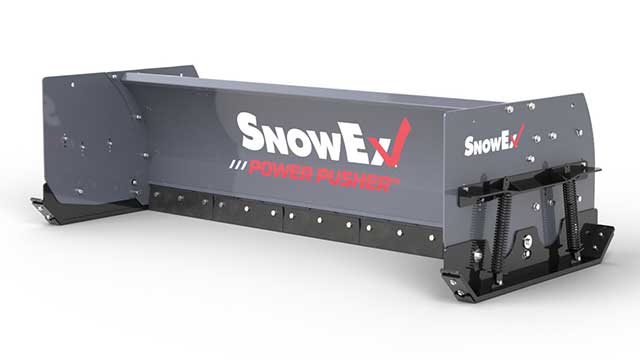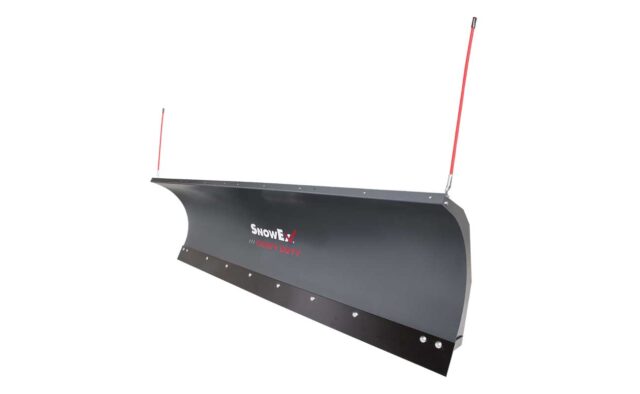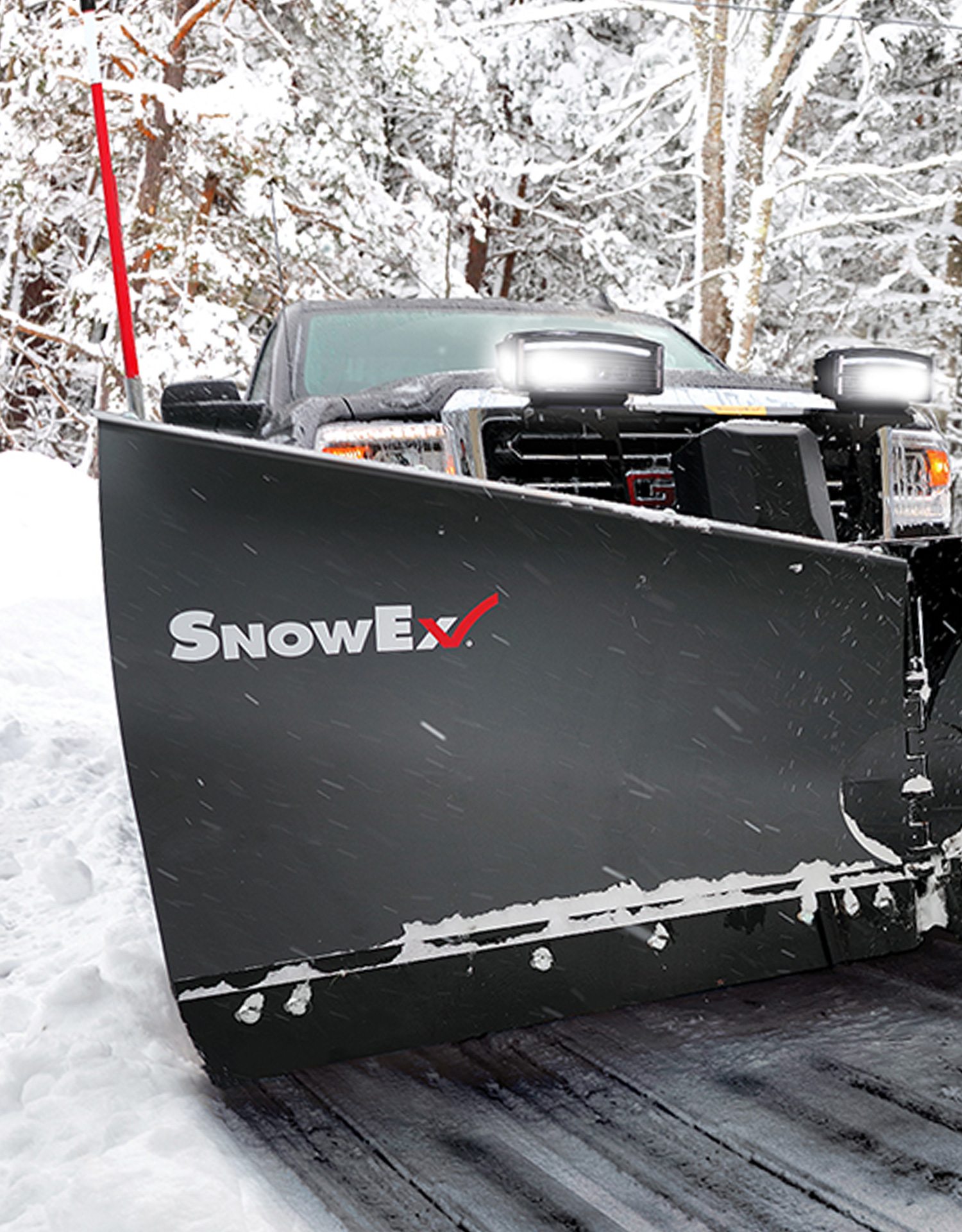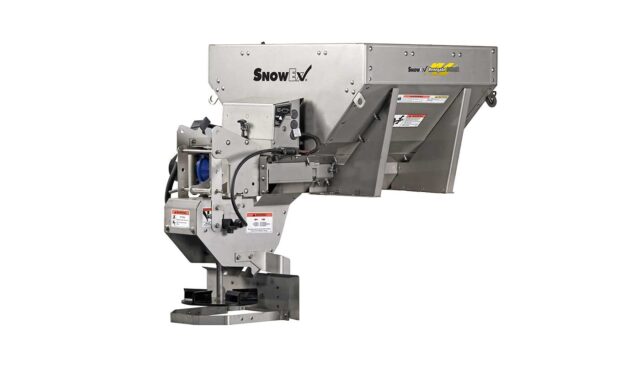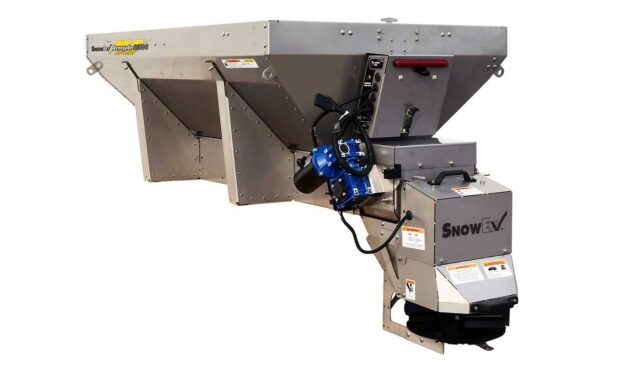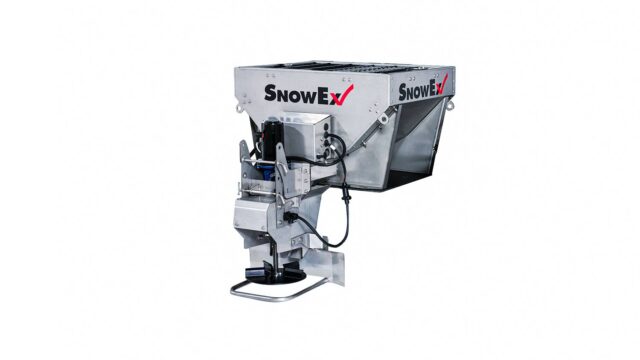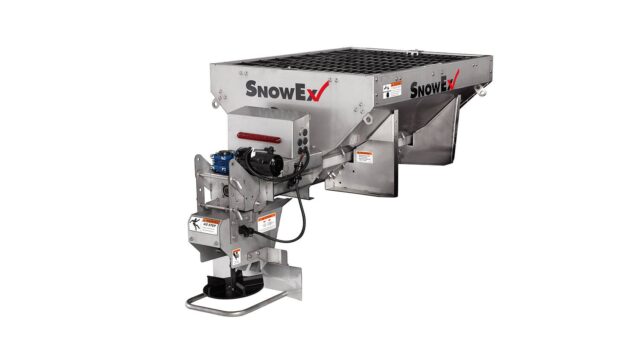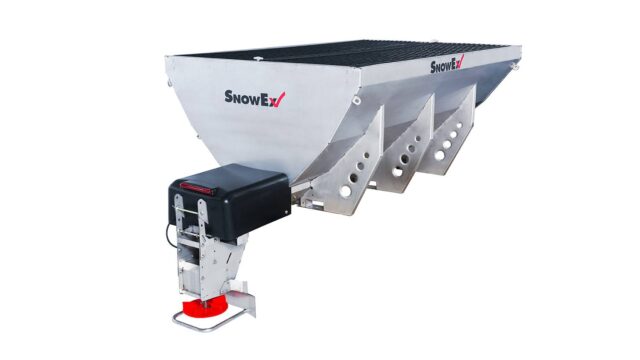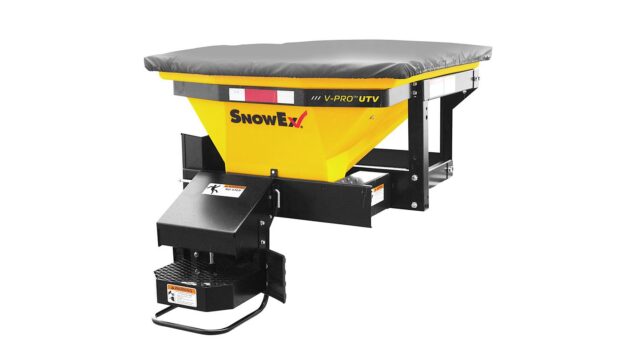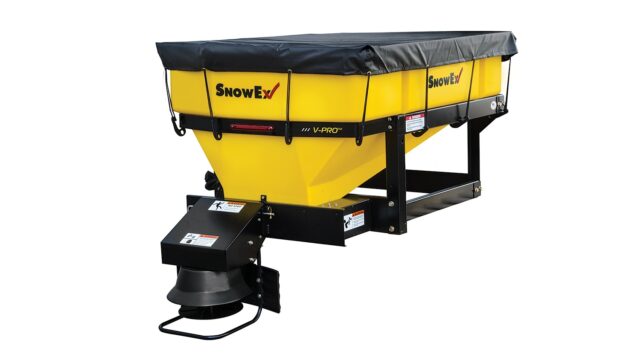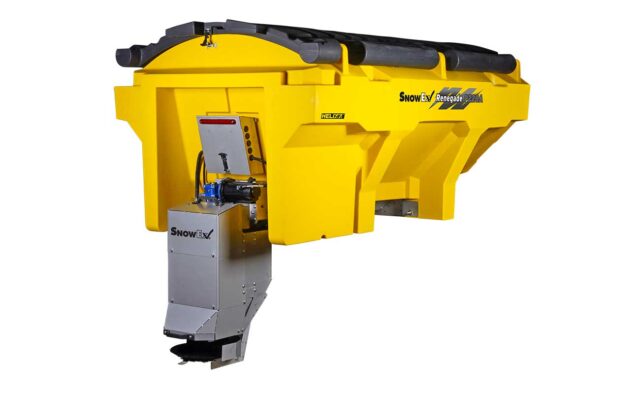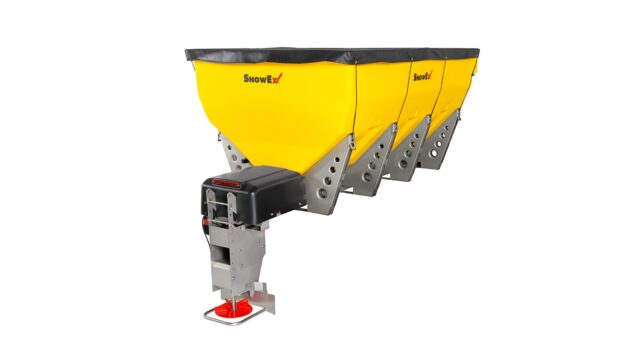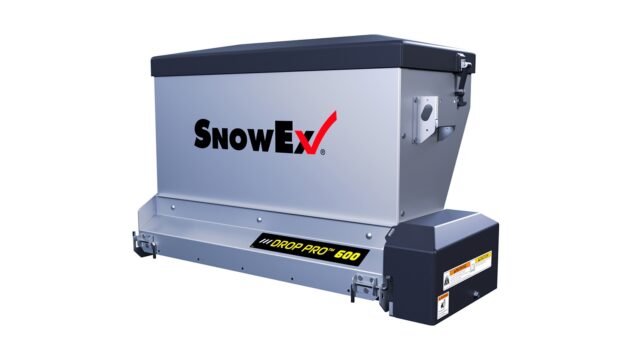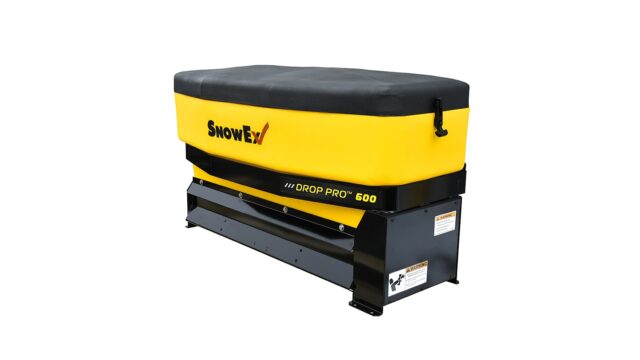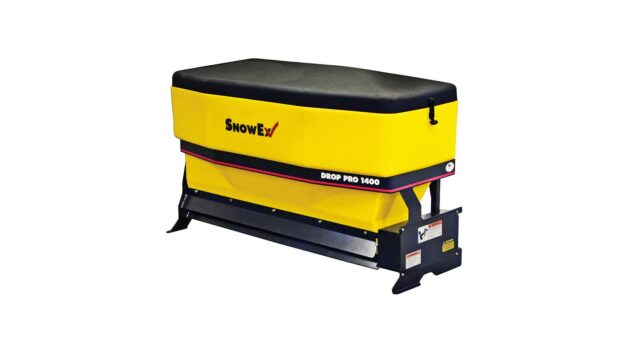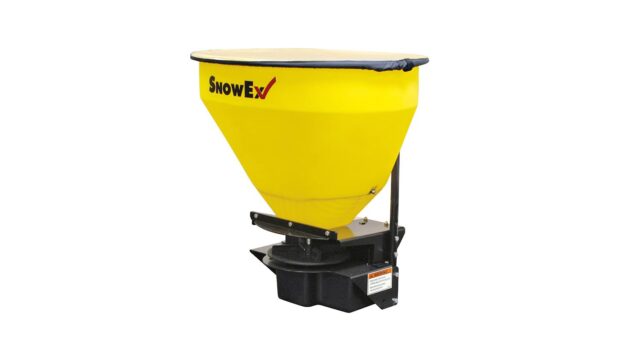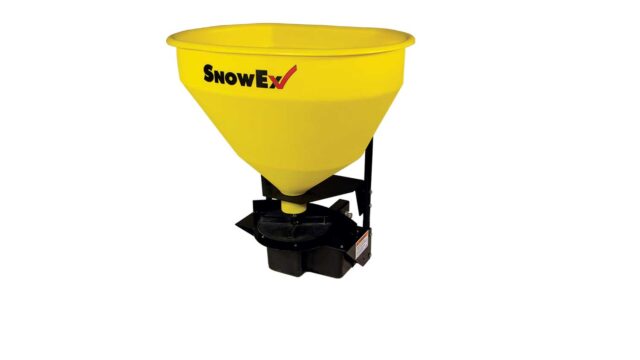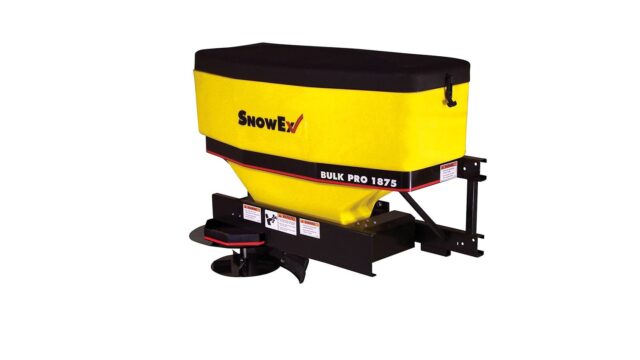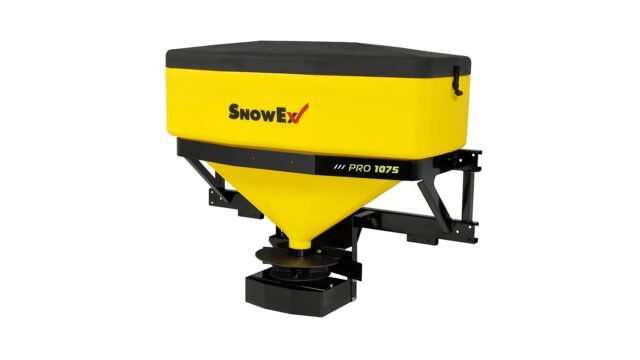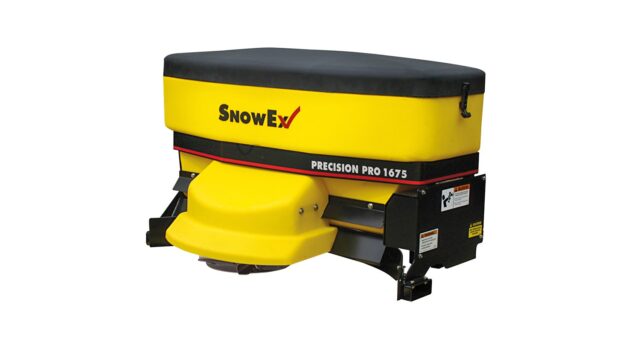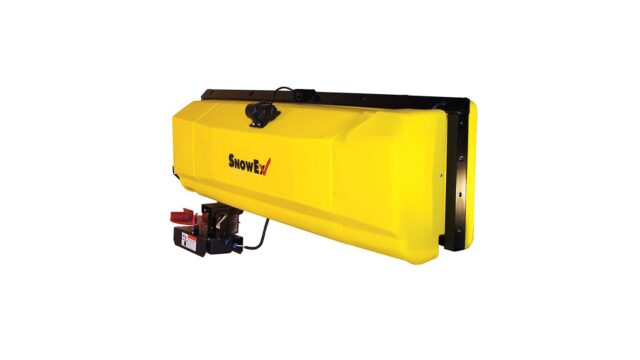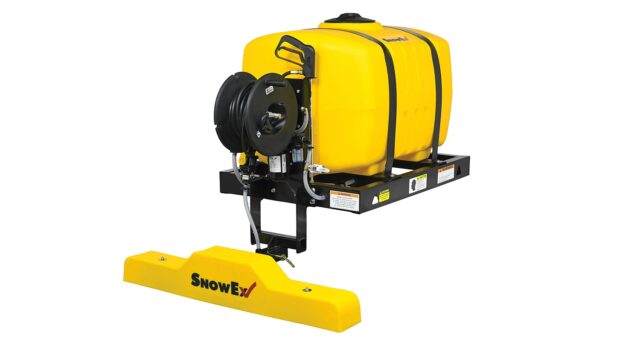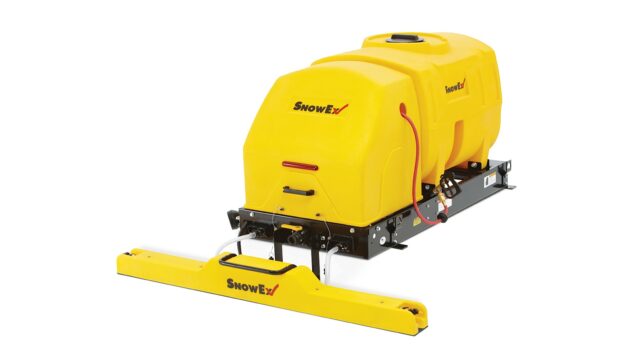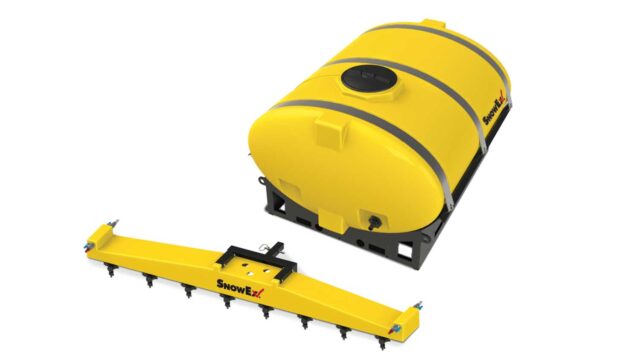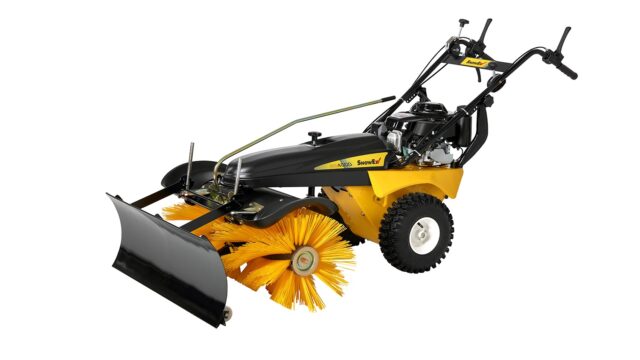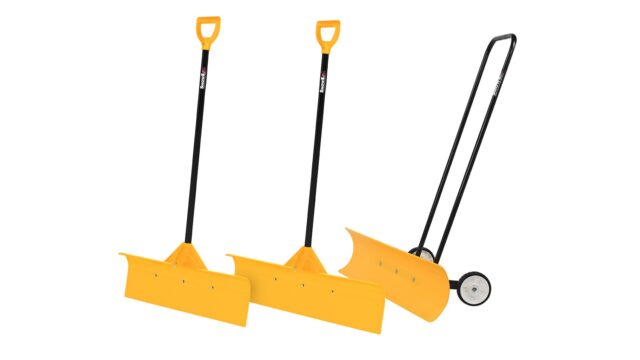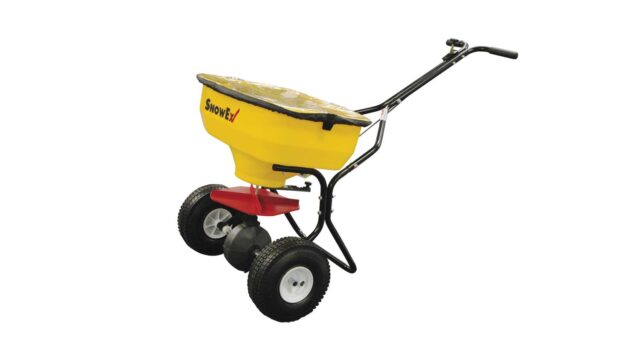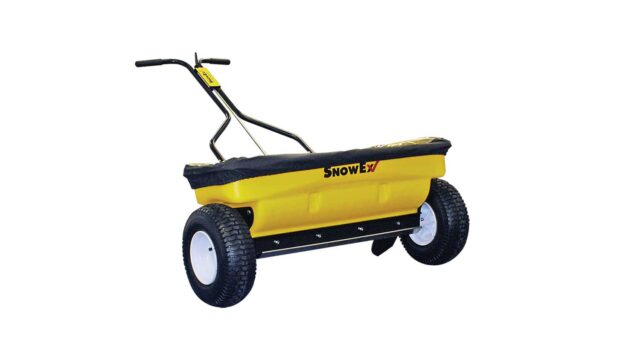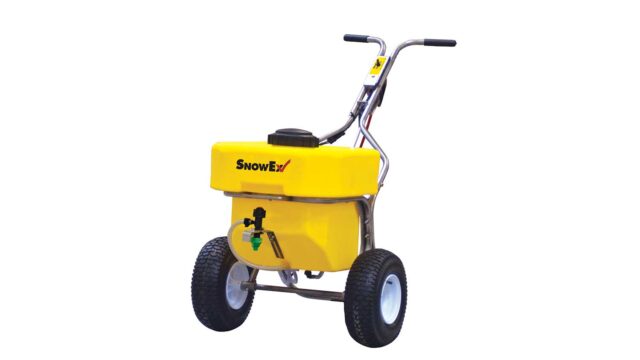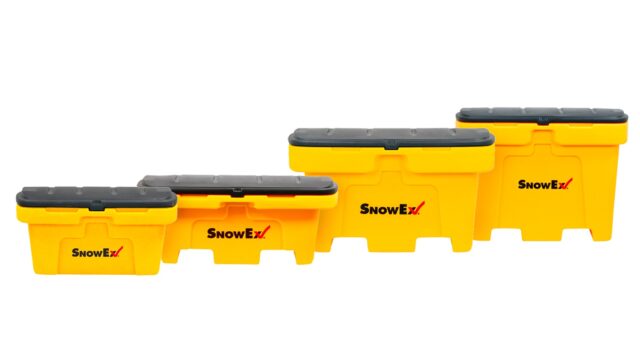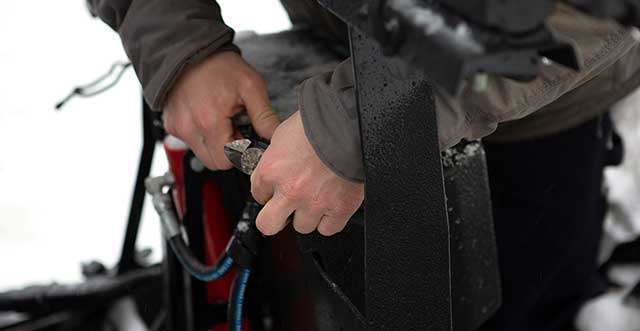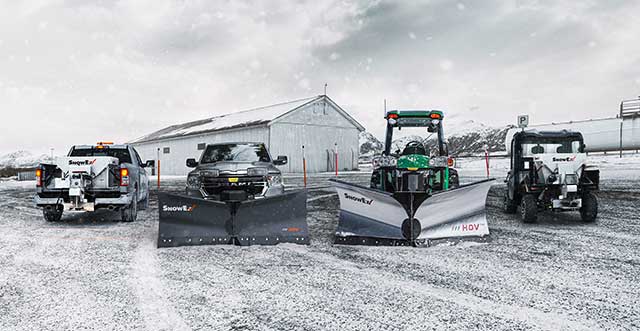Snow Removal 101: Helping New Plow Drivers Get Efficient
Created December 2, 2020
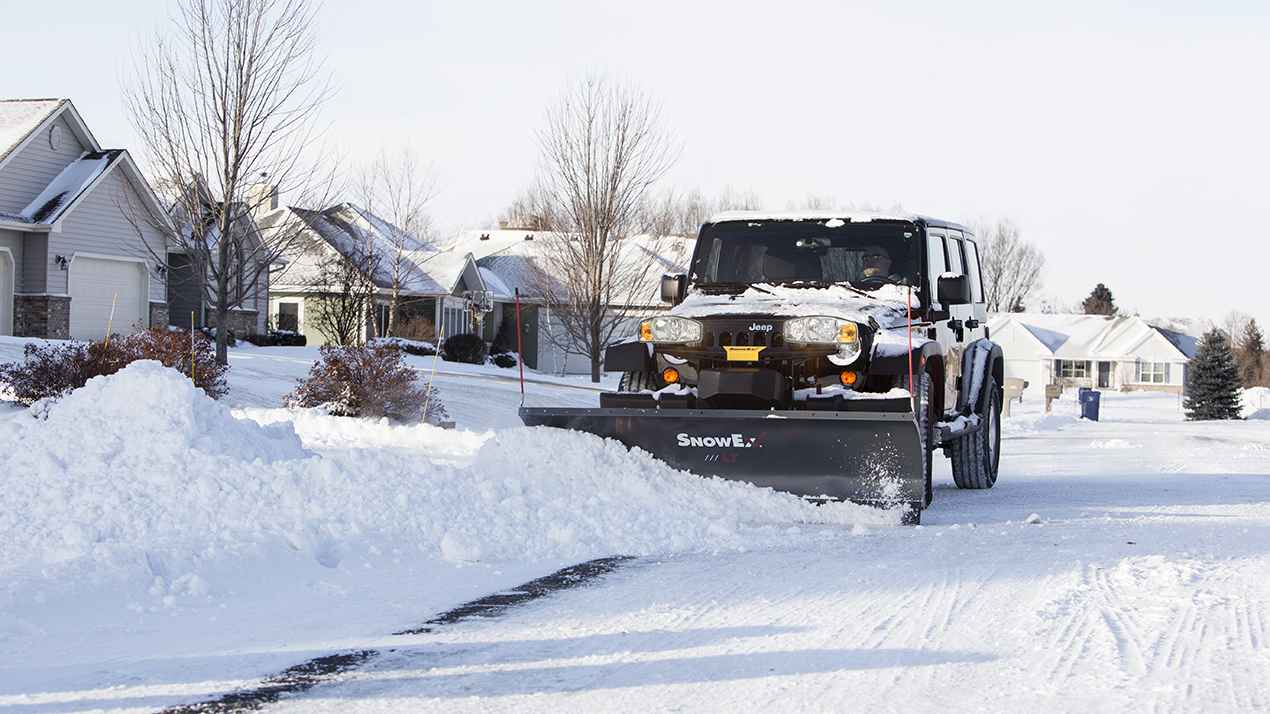
When you first start out plowing, it’s okay to try a few different techniques and start developing your own way of doing things. Understanding the ideal setup for your specific route will come with time but the best way to learn is through experience. This article will help get you up to speed on plowing efficiently, whether you’re a one-man crew or a small fleet.
Preparation Saves Time in the Long Run
The best thing to do when approaching a new property is to ask the owner if they have a preference on where to stack snow. A good rule of thumb is DO NOT pile snow on someone else’s property, on the street, sidewalk, on top of a structure or next to access points (mailbox, dumpster, electrical boxes, fire hydrants and water drains). Instead, evaluate the area and imagine what damage may occur in spring when it melts. The owner may want it stacked on the grass to maximize parking space but that usually results in damaged turf and can leave the contractor on the hook for fixing it. Make sure to consider this up front and charge accordingly if landscape repair will be needed.
Before the first snowfall, take pictures of key areas and place markers to map out the edges of the driveway and sidewalks as well as cones to alert drivers of obstacles to avoid. Note any pre-existing damages to the property. Having guides help to reduce damage to foliage, lighting or décor located near the edges of the property and will protect your equipment. These steps are especially important if you will not be driving the plow yourself.
Pack an emergency kit and other essential tools so you’re ready in case of a breakdown. Check inventory often and keep your kits up-to-date to make sure they are reliable.
Straight Blade Versus V-Plow Verses Winged Plows—Which is Right for You?
Purchasing a new plow is an investment in your business. You’ll want to make sure it can do the job at hand and perform as expected.
A straight blade is the most popular, entry level blade that is ideal for driveways and small properties. They generally cost less than a winged or v-plow because of the straight-forward design. Straight blade plows are simple to operate and used mainly to push and drag snow.
V-Plows are like a Swiss army knife. They are versatile and able to take care of a wide variety of jobs. This multi-use functionality makes v-plows a valuable time saver for commercial properties but they do come at a higher price point. The v-position is intended for the first pass to break through hard pack and snow drifts. The plow can then easily switch to a scoop position to increase carrying capacity.
Winged plows are high productivity, high skill blades. They are almost as versatile as V-Plows, but do not break drifts any better than a straight blade. Against that, winged plows carry the most snow of the three options, which comes at a “cost” for the added functionality and make winged plows more difficult to master.
Driveways & Parking Lots Require Different Plowing Techniques
It’s common knowledge that plowing in a straight line and pushing snow from the middle to the outside is ideal. This helps to efficiently place the snow where you intend to stack it (off to the side). Plow with the storm. Don’t wait for the last snowflake to fall, especially with entry level equipment and heavy snowfalls to reduce unnecessary wear.
Driveway Plowing Tips:
Back-dragging helps to remove snow from tight edges near garage doors or buildings when you don’t want to get too close and accidently damage siding. First, you’ll raise the blade, drive forward towards the building, and then lower the blade back down to the pavement. Start backing up while pulling the snow with you, away from the building. To avoid inflicting damage to your vehicle, only back-drag the length of two or three vehicle with each back-drag pass.
Next, back into the clear area with the blade angled to the center of the driveway and push the snow to the end of the driveway. Then clean it up by pushing the snow into the corners at the end of the driveway to allow for clear entry.
Unleash your plows fullest scraping potential with Scrape Maxx™ Down-Force Kits to maximize back-dragging performance. It adjusts to the pavement and allows your blade to maintain a consistent contact pressure while plowing. ScrapeMaxx is available for any SnowEx truck plow using the existing control. You can also accessorize with back drag edges to improve the clean scrape of back dragging by adding a backward angled blade behind the main cutting edge.
Parking Lot Plowing Tips:
Don’t wait and let the snow accumulate. Commercial businesses want easy and safe access for their customers and employees. Plowing multiple times during a storm and removing the snow in layers can help reduce unnecessary wear on your equipment.
When plowing large open spaces with a winged plow, angle the blade for a windrow technique with the leading wing forward. This directs more snow into the moldboard of the blade and allows for a full pass with minimal spill-off. As you come to the end of a pass, lift off the accelerator while starting to use the brake and raise the blade to help stack the snow. This method is easier on your electrical system. When you first establish a snow stacking spot, make sure to push the banks back far enough to anticipate room for future snowfalls.
Accessorizing with plow wings on a straight or v-plow extends the length of the blade, maximizing your blade width and carrying capabilities. This reduces the number of passes needed to clear the property, cutting down job time and improving profitability.
Offer Full Service Snow Removal With De-icing
Residential properties and commercial store fronts have a lot of foot traffic, making them prone to slip and fall incidents. Don’t neglect safety and remember to de-ice the property after plowing. Salting can also help to melt away any residual snow and keep the property clear.
Walk-behind spreaders can reduce the time it takes to throw down salt for driveways and sidewalks—available in both drop or broadcast spread patterns. When trying to de-ice small commercial properties like a parking lot, a tailgate spreader is a great investment that requires minimal installation. It is easy to take on and off throughout the season as needed. Tailgate spreaders have the appropriate capacity for residential and light commercial de-icing services. You can even fit a snow blower or other walk-behind equipment in the bed of your vehicle with the tailgate spreader installed.
When you’re plowing for profit, efficiency is at the forefront of everything you do while adhering to safety protocols. Each pass makes a difference and having the proper technique and equipment for each route can cut down on time, improving your bottom line.
